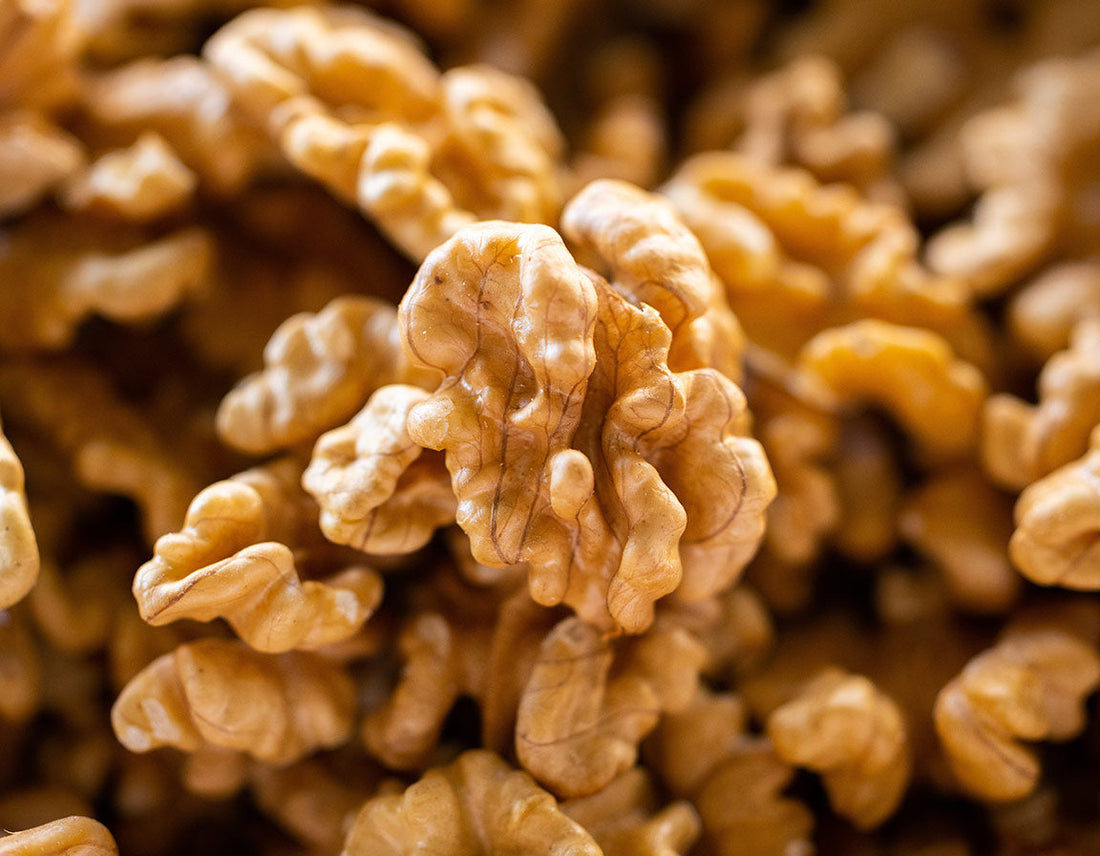
Activated nuts and umami
Share
What Makes the Flavour So Unique?
What is Umami - and What Do Nuts Have to Do With It?
Umami is the fifth basic taste alongside sweet, sour, salty and bitter. The word comes from Japanese and means "savoury" or "delicious". It's not a sharp flavour but rather deep, round, and full-bodied. Umami naturally occurs in fermented, protein- and glutamate-rich foods like cheese, mushrooms, meat, tomatoes, soy sauce, miso soup, kimchi - and in activated nuts.
How Does Umami Develop Naturally in Nuts?
It all begins with activation: a two-stage fermentation process that includes soaking in spring water with sea salt followed by slow dehydration at low temperatures over several days.
During this process, proteins are broken down enzymatically. This releases natural glutamate - the key to that signature umami taste.
Getting this right takes precision. Temperature, airflow and time must align perfectly. At 2DiE4 Live Foods, we've spent years refining a method that brings out the full umami potential of every nut.
Natural Glutamate in Nuts - and Why That's a Good Thing
In nuts, natural glutamate is bound to proteins and occurs alongside other amino acids, vitamins, and minerals. It's slowly released as you chew and is processed like any other amino acid in the body.
It helps stimulate saliva, supports digestion, and plays a role in regulating satiety. On top of that, activated nuts are a great source of plant protein, fibre, healthy fats and micronutrients - made more bioavailable through activation.
Natural vs. Artificial - Umami and MSG
MSG (monosodium glutamate) is synthetically produced and added to processed foods to enhance flavour. It's often used to mask lower quality ingredients and can overwhelm the natural balance of taste.
Because it's isolated, MSG is absorbed quickly and may cause symptoms like headaches or nausea in sensitive individuals.
Natural glutamate in activated nuts, on the other hand, is embedded in a whole food matrix - and is digested and metabolised more gradually.
What Does Umami Taste Like in Activated Nuts?
Umami is smooth, lingering and layered. In activated nuts, it comes through as a deep, satisfying base note. The bitterness is reduced, the texture is more balanced - and the overall flavour is elevated.
Here's how the umami profile shows up in our activated nut varieties:
- Walnuts: less bitter, pleasantly rich
- Cashews: mild, almost creamy finish
- Pecans: buttery and nutty with a gentle sweetness
- Pistachios: intense, aromatic, almost creamy
- Hazelnuts: roasted and round, despite being raw
- Brazil nuts: full and earthy
- Pumpkin seeds: savory, slightly umami
- Tamari almonds: hearty thanks to fermented soy sauce
Each nut variety highlights a different side of umami - proof that this taste is as diverse as nature itself.
What Happens During Fermentation - and Why It Matters
Fermentation is a natural process where enzymes and microorganisms break down complex compounds.
In nuts, this means:
- Phytic acid is reduced
- Minerals like magnesium, zinc and iron become more bioavailable
- Proteins break down into absorbable amino acids
- Enzyme inhibitors are removed
The result: nutrients are easier to absorb, and flavour becomes deeper, rounder and more satisfying.

Why Activate Nuts at All?
Raw nuts contain natural defence compounds that make them harder to digest. Activation breaks down these barriers and unlocks their full potential.
The benefits:
- Fewer anti-nutrients and allergens
- Easier to digest
- Higher nutrient absorption
- Smoother, more balanced flavour
- Longer shelf life and freshness
Activation isn't new. Indigenous cultures used seawater and sun to make nuts more digestible long before modern science confirmed its value.
Conclusion: Umami Is the Taste of Thoughtful Preparation
Activated nuts don't just taste different - they feel different. Better digestion, more nutrients, fuller flavour. All thanks to a process that respects the nut and lets nature do the work.
Umami isn't something we add - it's something we reveal. A flavour that comes from within.
FAQ - Umami & Activated Nuts
- What is Umami?
The fifth taste, alongside sweet, sour, salty and bitter. It's linked to natural glutamate and often found in fermented foods. - How is Umami created in nuts?
Through two-stage fermentation: soaking in salted spring water and slow drying at low temperature. Enzymes break down proteins to release glutamate. - Why activate nuts?
Because raw nuts can be hard to digest. Activation reduces anti-nutrients, improves nutrient absorption and makes the flavour smoother. - How long does the process take?
Between two and three days, depending on the nut variety. - Are there proven benefits?
Yes. Research shows umami not only enhances flavour but also supports digestion and satiety by increasing saliva and gastric juice production.

